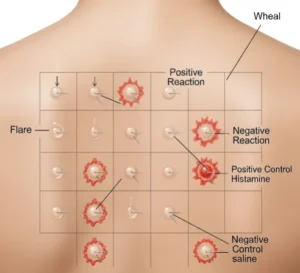Overview
Chemotherapy is a medical treatment using drugs to destroy or inhibit the growth of cancer cells. It is a cornerstone of cancer management and may be used alone or in combination with surgery, radiation, or targeted therapies.
Importance of chemotherapy:
- Targets rapidly dividing cancer cells to reduce or eliminate tumors.
- Can shrink tumors before surgery or destroy remaining cells after surgery.
- Treats metastatic or advanced cancers to prolong survival and improve quality of life.
- Supports multimodal cancer therapy in combination with other treatments.
In South Korea, chemotherapy is delivered in modern oncology centers with highly trained oncologists, advanced infusion technology, and supportive care systems to ensure effective and safe treatment.
Why It’s Done
Chemotherapy is indicated for cancer management based on type, stage, and overall patient condition.
Common indications include:
- ➤ Primary treatment: For cancers sensitive to chemotherapy, e.g., leukemia, lymphoma, testicular cancer.
- ➤ Adjuvant therapy: After surgery to eliminate microscopic residual cancer cells.
- ➤ Neoadjuvant therapy: Before surgery to shrink tumors and improve operability.
- ➤ Palliative therapy: To relieve symptoms and improve quality of life in advanced or metastatic cancer.
- ➤ Combination therapy: With radiation, immunotherapy, or targeted therapy for enhanced effect.
Benefits for patients:
- ✔️ Reduces tumor size or cancer cell burden.
- ✔️ Improves surgical outcomes by making tumors operable.
- ✔️ Helps control metastatic disease.
- ✔️ Extends survival and improves quality of life in advanced cancers.
Alternatives
Alternatives to chemotherapy depend on cancer type and stage:
- ➤ Surgery: Removes localized tumors entirely.
- ➤ Radiation therapy: Destroys cancer cells in specific areas.
- ➤ Targeted therapy: Uses drugs to attack cancer cells with specific molecular targets.
- ➤ Immunotherapy: Boosts the body’s immune system to fight cancer.
- ➤ Hormone therapy: For hormone-sensitive cancers like breast or prostate cancer.
Key point: Chemotherapy remains a mainstay for systemic disease, while other therapies may be more suitable for localized or specific cancers.
Preparation
Preparation for chemotherapy involves medical evaluation and planning to optimize safety and efficacy.
Steps include:
- ✅ Comprehensive assessment: Blood tests, imaging, and organ function evaluation (liver, kidney, heart).
- ✅ Medication review: Adjust medications that may interfere with chemotherapy.
- ✅ Allergy and prior reaction history: Check for drug hypersensitivity.
- ✅ IV access planning: Placement of peripheral IV, port-a-cath, or central line for repeated treatments.
- ✅ Informed consent: Discuss treatment plan, potential side effects, and expected outcomes.
- ✅ Lifestyle adjustments: Nutrition, hydration, and infection prevention strategies.
Important: Proper preparation reduces complications and ensures treatment success.
How It’s Done
Chemotherapy can be administered through various routes depending on drug type and cancer type:
Administration methods:
- Intravenous (IV): Most common; drugs delivered directly into the bloodstream.
- Oral: Pills or capsules taken at home under supervision.
- Intramuscular (IM) or subcutaneous (SC): For certain drugs requiring injection.
- Intrathecal: Delivered into the cerebrospinal fluid for central nervous system cancers.
- Regional: Directly into body cavities (e.g., bladder, peritoneal cavity) for localized treatment.
Step-by-step IV chemotherapy process:
- IV access placement – peripheral line or central venous catheter.
- Pre-medication – anti-nausea, steroids, or antihistamines as needed.
- Drug infusion – carefully monitored over minutes to hours, depending on protocol.
- Observation – for allergic reactions or immediate side effects.
- Post-infusion care – hydration, anti-nausea medication, and monitoring.
Duration: Single sessions range from minutes to several hours, repeated in cycles over weeks or months.
Hospital stay: Usually outpatient; some high-dose chemotherapy may require inpatient care.
Key point: Advanced centers in Korea monitor vital signs, side effects, and lab values during chemotherapy to optimize safety.
Recovery & Supportive Care
Recovery from chemotherapy is gradual and supported by various interventions.
Immediate post-treatment care:
- Monitor for nausea, fatigue, or infusion reactions.
- Encourage hydration and light activity.
- Support with anti-nausea and pain medications as prescribed.
Short-term recovery:
- Manage side effects like hair loss, mouth sores, anemia, and immune suppression.
- Maintain nutrition, rest, and mental health support.
- Regular blood tests to monitor blood counts and organ function.
Long-term recovery:
- Gradual normalization of blood counts and immune function between cycles.
- Long-term monitoring for late side effects such as heart, kidney, or nerve complications.
- Integration with rehabilitation, counseling, and survivorship programs.
Important: Supportive care ensures treatment adherence and overall quality of life.
Possible Complications
Chemotherapy affects both cancer and healthy rapidly dividing cells, leading to various side effects:
- ⚠️ Bone marrow suppression: Low blood counts, anemia, infection risk.
- ⚠️ Nausea and vomiting – often controlled with antiemetics.
- ⚠️ Hair loss (alopecia) – reversible after treatment.
- ⚠️ Fatigue and weakness – may persist for days to weeks.
- ⚠️ Mouth sores and gastrointestinal issues – pain and discomfort.
- ⚠️ Organ toxicity: Heart, kidney, liver, or lung complications depending on drug regimen.
- ⚠️ Neuropathy: Nerve damage causing tingling or numbness.
- ⚠️ Increased infection risk due to immune suppression.
In South Korea, advanced oncology centers minimize complications with:
- Careful dose planning
- Pre- and post-treatment monitoring
- Supportive medications
- Rapid intervention for side effects
Treatment Options / Clinical Relevance in Korea
Chemotherapy is an essential part of cancer care in South Korea, provided in specialized oncology centers with comprehensive care.
Key features:
- 🏥 Modern infusion centers with trained oncologists and nurses.
- 🏥 Combination therapy protocols: Chemotherapy with surgery, radiation, immunotherapy, or targeted therapy.
- 🏥 Supportive care services: Anti-nausea medications, growth factors, blood transfusions, and psychological support.
- 🏥 Personalized treatment: Dosing and drug selection based on cancer type, stage, and patient health.
- 🏥 Emergency care: Rapid management of side effects or infusion reactions.
Hospitals offering chemotherapy in Korea:
- Samsung Medical Center – Comprehensive oncology and chemotherapy protocols
- Asan Medical Center – Advanced cancer treatment with multidisciplinary support
- Seoul National University Hospital – Personalized cancer care and infusion therapy
- National Cancer Center, Korea – Research-based chemotherapy and clinical trials
Highlights in Korea:
- ✔️ Safe, effective chemotherapy protocols tailored to individual patient needs.
- ✔️ Integration of supportive care ensures better tolerance and adherence.
- ✔️ Combination therapy improves survival and quality of life.
- ✔️ Nationwide accessibility with specialized oncology centers and trained teams.
Highlights
- ➤ Chemotherapy uses drugs to kill or inhibit cancer cells and is key in cancer treatment.
- ➤ Indicated for primary, adjuvant, neoadjuvant, palliative, or combination therapy.
- ➤ Alternatives include surgery, radiation, targeted therapy, immunotherapy, and hormone therapy.
- ➤ Preparation involves lab tests, medical evaluation, IV access, and informed consent.
- ➤ Procedure duration: Minutes to hours; repeated in cycles over weeks or months.
- ➤ Recovery involves supportive care for side effects, monitoring, and gradual return to normal function.
- ➤ South Korea provides advanced chemotherapy services with modern infusion centers, supportive care, and multidisciplinary teams.













